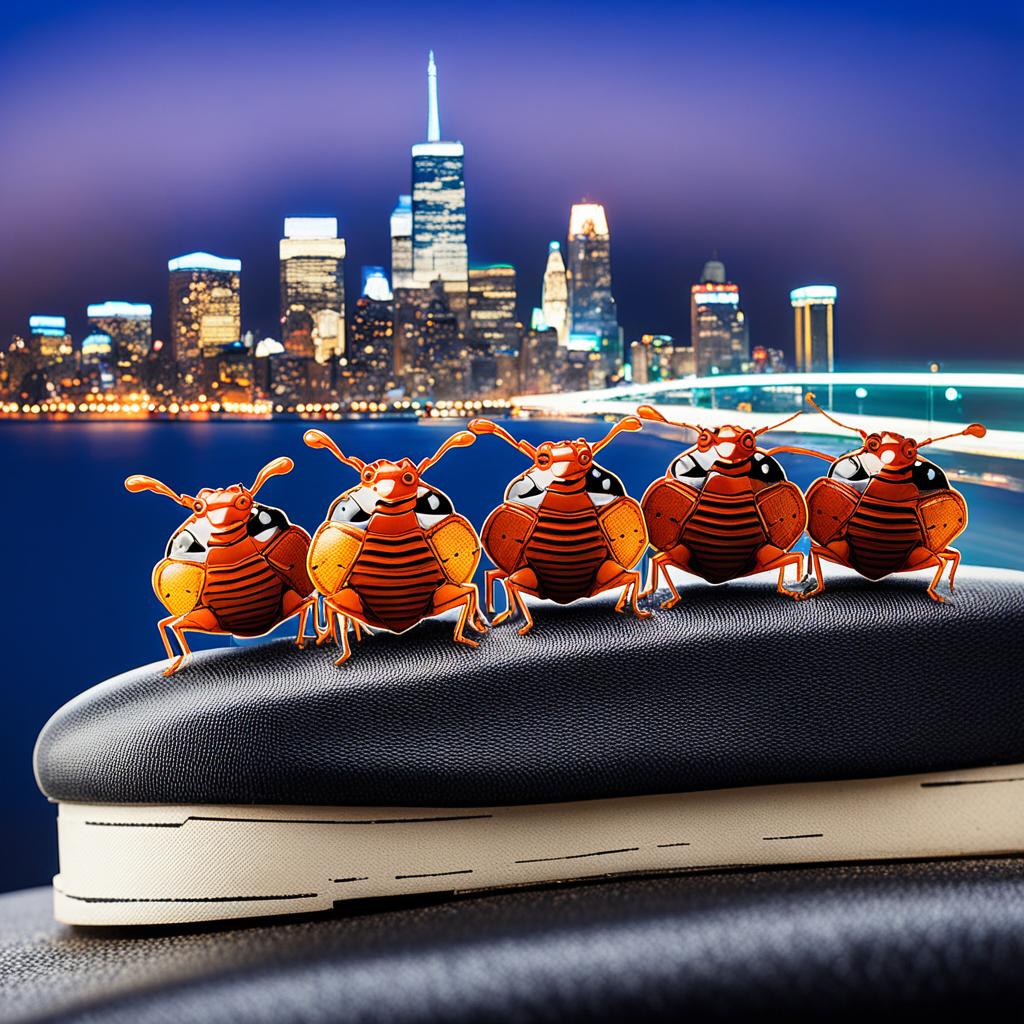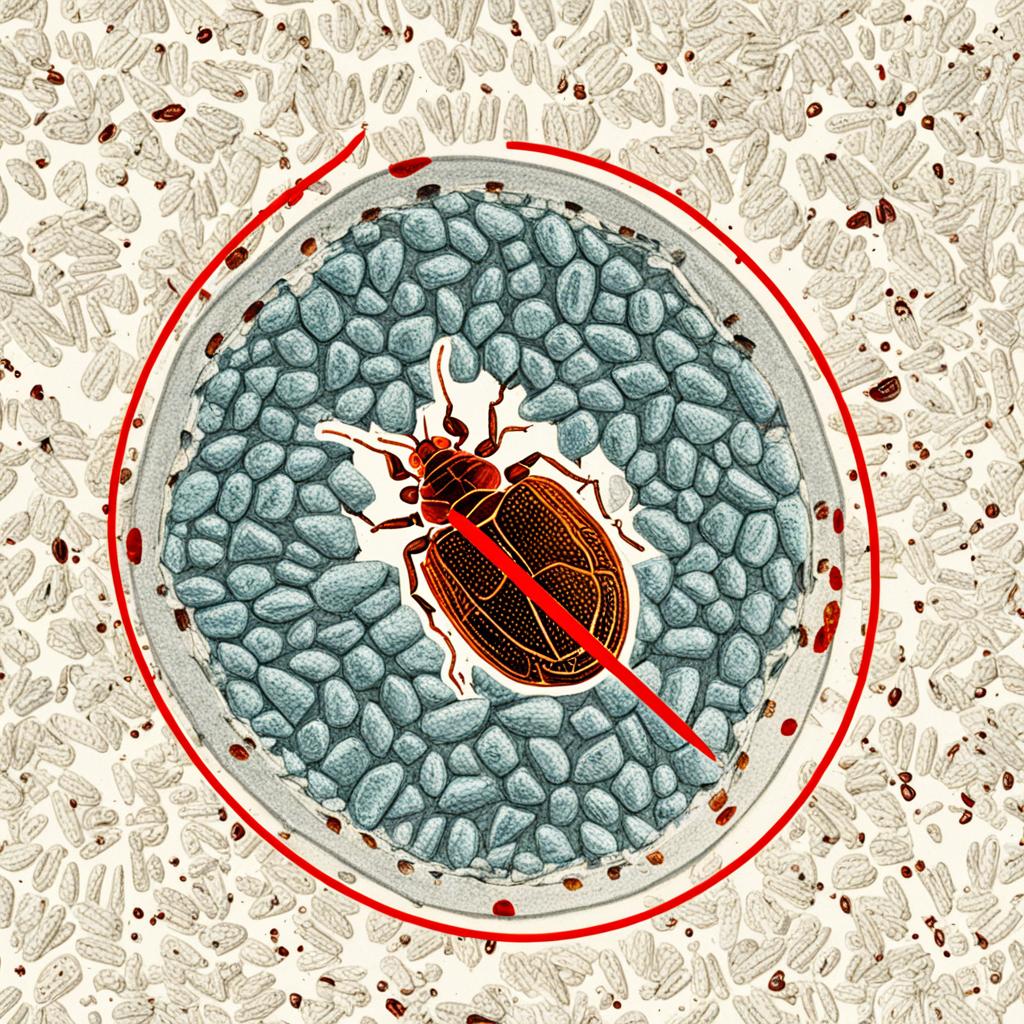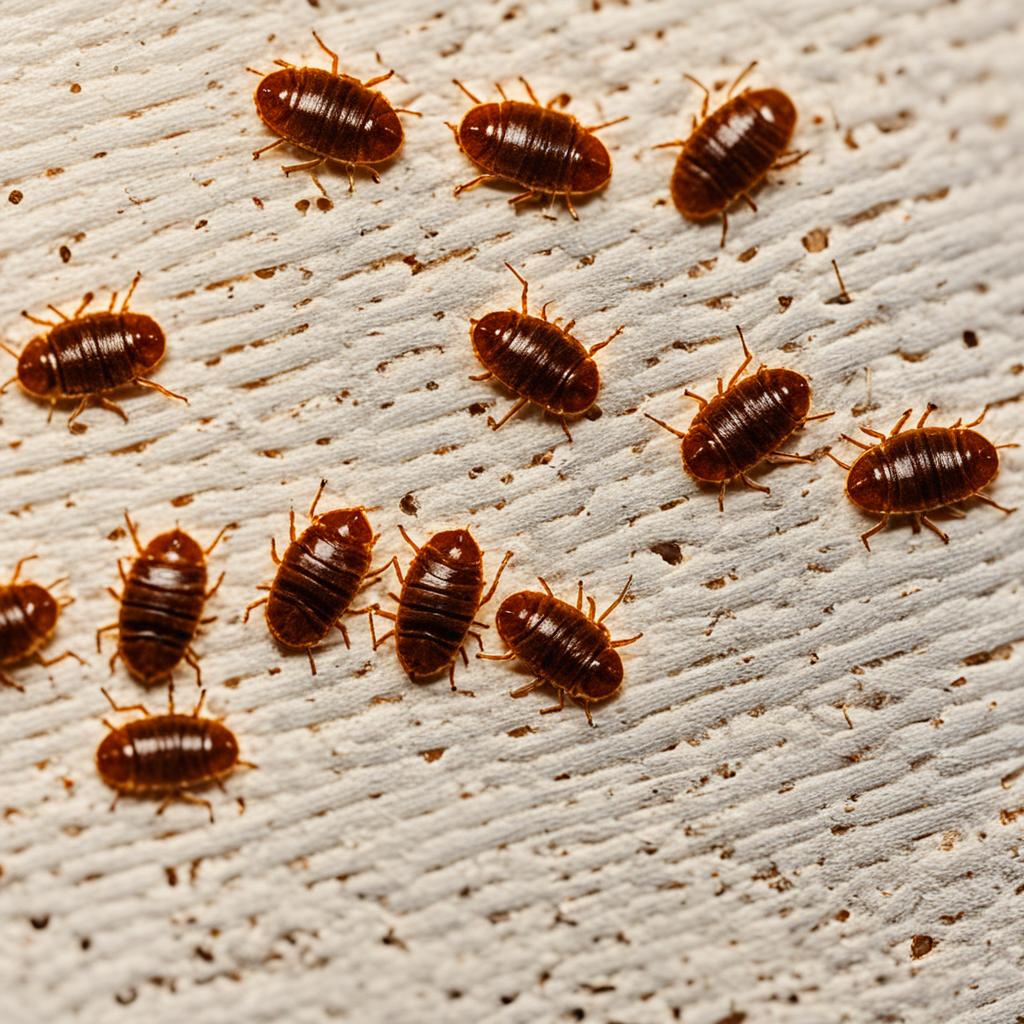When it comes to pesky critters like bed bugs, it’s crucial to know how they can infiltrate our homes. We’ve all heard horror stories of these tiny pests hiding in mattresses and furniture, but what about our shoes? Can bed bugs really travel on our footwear, potentially leading to a full-blown infestation? Let’s dig deeper and explore the truth behind this question.
Bed bugs are known for their ability to hitchhike, and unfortunately, this includes hitching a ride on our shoes.
But how exactly do these creepy crawlies manage to travel from one place to another? Are there any measures we can take to prevent our shoes from becoming a bed bug transportation vehicle? What are some common myths and facts about bed bugs that we need to be aware of?
Join us as we unravel the mysteries surrounding bed bugs and shoes. Discover the tips and guidelines you need to know to prevent bed bug infestations and protect your home. Whether you’re an avid traveler or simply want to keep your living space bed bug-free, this article will provide you with the knowledge you need to stay one step ahead in the battle against these resilient pests.
How Do Bed Bugs Travel?

Bed bugs have an efficient mode of travel – hitchhiking. They don’t have wings to fly or the ability to jump, but they rely on attaching themselves to objects and people to move from one place to another. These pesky pests can easily hitch a ride on your clothing, luggage, and even your shoes.
When it comes to shoes, bed bugs find them particularly alluring. They can cling to shoelaces, hide in the soles, or tuck themselves away in the crevices. This makes shoes an ideal hiding place for bed bugs during their journey.
Once bed bugs find a suitable host, they can easily make their way into new environments. So, if you accidentally bring bed bugs into your home on your shoes, they may quickly infest your living space.
To prevent a potential bed bug infestation, it’s important to take precautions when it comes to your shoes. Regularly inspect and clean your footwear to ensure there are no bed bugs hiding inside. Taking these steps can help protect your home from these unwelcome visitors.
Tips to Keep Bed Bugs Out of Your Shoes
To prevent bed bugs from infesting your shoes, it’s important to take some proactive measures. By following these tips, you can minimize the risk of a bed bug infestation in your footwear and keep these pesky pests away.
- Regularly wear your shoes: Bed bugs prefer places that are undisturbed for long periods. By regularly using your shoes, you create an environment that is less attractive to bed bugs.
- Inspect and clean rarely used shoes: Shoes that are stored and rarely used can become hiding spots for bed bugs. Regularly check for signs of bed bug activity, such as rust-colored stains or shed skins. If infested, clean them thoroughly or consider discarding them.
- Store shoes away from the bed: Keeping your footwear in close proximity to your bed increases the chances of bed bugs crawling into your shoes. Store them in a separate area, such as a closet or shoe rack, to reduce the risk of infestation.
- Use protective storage: When storing shoes, consider using sealed plastic bags, shoe boxes, or storage containers. This helps prevent bed bugs from accessing your footwear and creating a suitable habitat.
Besides these preventive measures, it’s also essential to maintain overall cleanliness and hygiene in your living environment. Regularly vacuuming and decluttering can further deter bed bugs from finding a comfortable home in your shoes or other areas of your home.
| Preventive Measures | Benefits |
|---|---|
| Regularly wear your shoes | Creates an environment that is less attractive to bed bugs |
| Inspect and clean rarely used shoes | Identify and eliminate any potential bed bug infestations early |
| Store shoes away from the bed | Reduces the risk of bed bugs crawling into your shoes |
| Use protective storage | Prevents bed bugs from accessing your footwear |
Bed Bug Myths and Facts

There are several myths surrounding bed bugs that need to be debunked. It’s important to separate fact from fiction when it comes to these notorious pests.
-
Myth: Bed bugs can fly or jump.
Fact: Bed bugs do not have wings, so they cannot fly. They also cannot jump like fleas. Instead, they rely on crawling and hitchhiking to move from one place to another.
-
Myth: Bed bugs only bite at night.
Fact: Contrary to popular belief, bed bugs are not solely nocturnal creatures. They can bite anytime, day or night, as their feeding patterns are driven by the availability of a host.
-
Myth: Bed bugs are limited to mattresses.
Fact: While bed bugs are often associated with mattresses, they can infest various surfaces in our living areas. They can hide in cracks and crevices of furniture, walls, baseboards, and even electrical outlets.
-
Myth: Bed bugs transmit diseases to humans.
Fact: Although bed bugs can carry human pathogens, there are no reported cases of them transmitting diseases to humans. Their bites can cause itching, discomfort, and secondary skin infections, but they are not known to spread illnesses.
Bed Bug Myths vs. Facts
| Myth | Fact |
|---|---|
| Bed bugs can fly or jump. | Bed bugs do not have wings or the ability to jump. |
| Bed bugs only bite at night. | Bed bugs can bite anytime, day or night. |
| Bed bugs are limited to mattresses. | Bed bugs can infest various surfaces in our living areas. |
| Bed bugs transmit diseases to humans. | Bed bugs do not transmit diseases to humans. |
The Worsening Bed Bug Problem

The bed bug epidemic is becoming increasingly prevalent worldwide, posing a significant challenge to public health. Factors such as densely populated urban areas, global travel, and pesticide resistance contribute to the escalating bed bug problem. Unlike other pests, bed bugs are indoor creatures, thriving in any season without a specific peak time.
The rise of bed bug infestations has forced health authorities and pest control operators to grapple with controlling their spread. Traditional pest control methods are proving less effective due to the emergence of pesticide resistance among bed bug populations. This resistance makes it harder to eliminate these blood-sucking pests and exacerbates the overall problem.
To combat the bed bug epidemic, it is crucial to raise awareness about prevention strategies and effective treatment options. By understanding the contributing factors and implementing proper preventive measures, individuals can help minimize the risk of infestation and protect their homes and businesses from these invasive pests.
Bed Bugs and Travel
Travelers, especially those staying in hotels, need to be vigilant to avoid bringing bed bugs home. When entering a hotel room, it’s essential to inspect the bed, bedding, and furniture for any signs of bed bug presence. Minimizing contact with beds and upholstered furniture, using disposable shoe covers, and keeping belongings sealed can help prevent bed bugs from hitching a ride on shoes or other items.
- Inspect the bed: Thoroughly examine the mattress, box springs, and headboard for signs of bed bugs. Look for live bugs, shed skins, or blood stains.
- Check the bedding: Lift up the sheets and inspect the seams of the mattress. Bed bugs often hide in these areas.
- Inspect the furniture: Look for bed bugs in chairs, couches, and other upholstered furniture. Pay close attention to seams, folds, and crevices.
- Minimize contact: Avoid placing your belongings on the bed or upholstered furniture. Instead, use luggage racks or keep your luggage sealed in plastic bags.
- Use disposable shoe covers: When entering a hotel room, consider using disposable shoe covers to prevent bed bugs from hiding in your shoes.
- Keep belongings sealed: Store your clothes, shoes, and other personal items in sealed plastic bags to prevent bed bugs from infesting them.
By following these simple yet effective tips, you can protect yourself from bed bug infestations while traveling and avoid bringing these pests home with you.
| Travel Tips to Avoid Bed Bugs | Benefits |
|---|---|
| Inspect the bed, bedding, and furniture | Identify and avoid potential bed bug infestations |
| Minimize contact with beds and upholstered furniture | Reduce the risk of bed bugs hitching a ride on clothing and belongings |
| Use disposable shoe covers | Prevent bed bugs from hiding in shoes and spreading to other items |
| Keep belongings sealed in plastic bags | Protect clothes and personal items from bed bug infestation |
Guidelines for Entering Potentially Infested Places
If you find yourself needing to enter potentially infested places, such as home health workers, maintenance personnel, or travelers, it’s crucial to follow specific guidelines to minimize the risk of picking up and transporting bed bugs. By taking these precautions, you can ensure your safety and prevent the spread of these pesky pests.
Minimize the Number of Items Brought In
To minimize the risk of bed bug infestation, it’s essential to limit the number of items you bring into potentially infested places. The more items you bring, the higher the chance of bed bugs hitching a ride and making their way into your belongings. Consider bringing only the necessary items and leaving unnecessary items behind to minimize the risk.
Avoid Contact with Beds and Furniture
When entering infested places, it’s crucial to avoid direct contact with beds and furniture where bed bugs may be hiding. These pests can easily cling to clothing, bags, or even shoes. By avoiding contact with potential hiding spots, you can minimize the risk of bed bugs crawling onto your belongings and hitching a ride unknowingly.
Use Disposable Shoe Covers
Using disposable shoe covers is an effective way to prevent bed bugs from latching onto your shoes and being brought back to your home or other locations you frequent. These covers create a barrier between your footwear and potential bed bug habitats, reducing the risk of transportation.
Inspect the Surroundings for Bed Bug Presence
Before entering potentially infested places, take the time to inspect the surroundings for signs of bed bug presence. Look for live bugs, shed skins, fecal stains, or small blood spots on mattresses, furniture, or baseboards. If you spot any signs of bed bugs, it’s crucial to notify the appropriate authorities or individuals in charge to address the infestation promptly.
| Guidelines for Entering Potentially Infested Places |
|---|
| Minimize the Number of Items Brought In |
| Avoid Contact with Beds and Furniture |
| Use Disposable Shoe Covers |
| Inspect the Surroundings for Bed Bug Presence |
What to Do After Visiting an Infested Place
After visiting a place suspected of having bed bugs, it’s crucial to take immediate action to prevent the further spread of these pesky pests. Here are a few essential steps you should follow:
1. Wash Your Clothes: As soon as you return home, remove and wash your clothes in hot water. Bed bugs cannot withstand high temperatures, so washing your clothes will help eliminate any potential hitchhikers. If washing is not immediately possible, place your clothes in a sealed plastic bag until you can clean them thoroughly.
2. Perform a Self-Check: Conduct a careful examination of your body and belongings to ensure you haven’t unknowingly brought any bed bugs with you. Pay close attention to your clothing, bags, and personal items. Inspect seams, folds, and pockets for any signs of bed bug activity, such as dark spots, shed skins, or live bugs.
3. Report the Infestation: If you notice any bite marks or suspect that you have encountered bed bugs during your visit, it is essential to report the infestation. Contact the relevant authorities or inform the building manager, hotel staff, or homeowner. Reporting the infestation promptly can help prevent the spread of bed bugs and protect others from experiencing the same issue.
FAQ
Q: Can bed bugs travel on shoes?
A: Yes, bed bugs can hitch a ride on shoes and make their way into your home.
Q: How do bed bugs travel?
A: Bed bugs primarily travel by hitchhiking, attaching themselves to clothing, luggage, and even shoes.
Q: What are some tips to keep bed bugs out of your shoes?
A: To prevent bed bugs from infesting your shoes, wear them regularly, check for signs of bed bug activity on rarely used shoes, store shoes away from the bed, and keep them in boxes or bags.
Q: What are some bed bug myths and facts?
A: Bed bugs do not have wings and cannot fly. They reproduce slowly and can bite at any time. Bed bugs are not exclusive to mattresses and can be found on various surfaces. While they can carry human pathogens, there are no reported cases of them transmitting diseases to humans.
Q: What is the worsening bed bug problem?
A: The bed bug problem is on the rise globally, with factors such as densely populated areas, global travel, and pesticide resistance contributing to the epidemic. There are no high or low seasons for bed bugs throughout the year.
Q: How can I avoid bringing bed bugs home while traveling?
A: When staying in hotels, inspect the bed, bedding, and furniture for signs of bed bugs, minimize contact with beds and upholstered furniture, use disposable shoe covers, and keep belongings sealed.
Q: What guidelines should I follow to minimize the risk of picking up bed bugs in potentially infested places?
A: Minimize the number of items you bring in, avoid contact with beds and furniture, use disposable shoe covers, and inspect the surroundings for bed bug presence.
Q: What should I do after visiting an infested place?
A: Wash your clothes immediately or put them in a hot dryer to eliminate potential bed bugs. Do a self-check to ensure you haven’t brought any bed bugs with you, and notify the relevant authorities or building manager to report the infestation if you develop bite marks after leaving.
